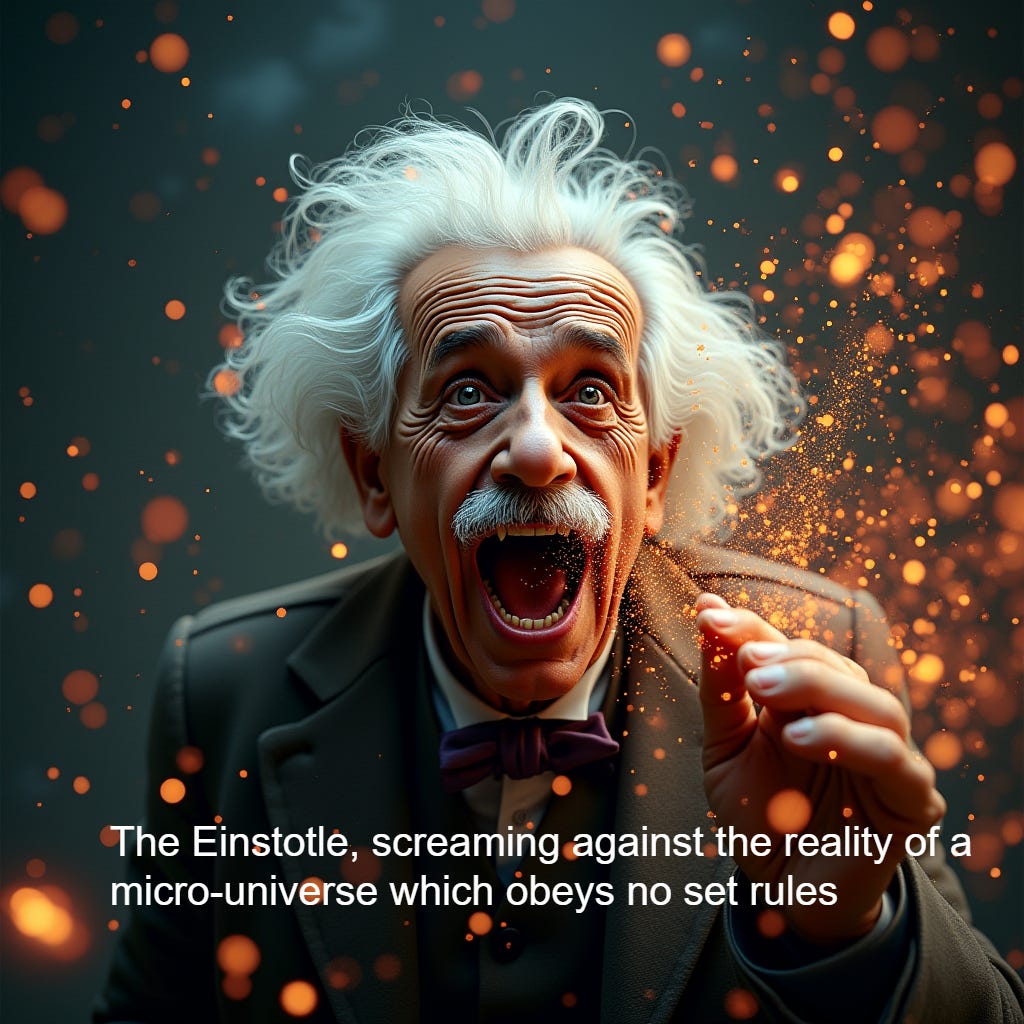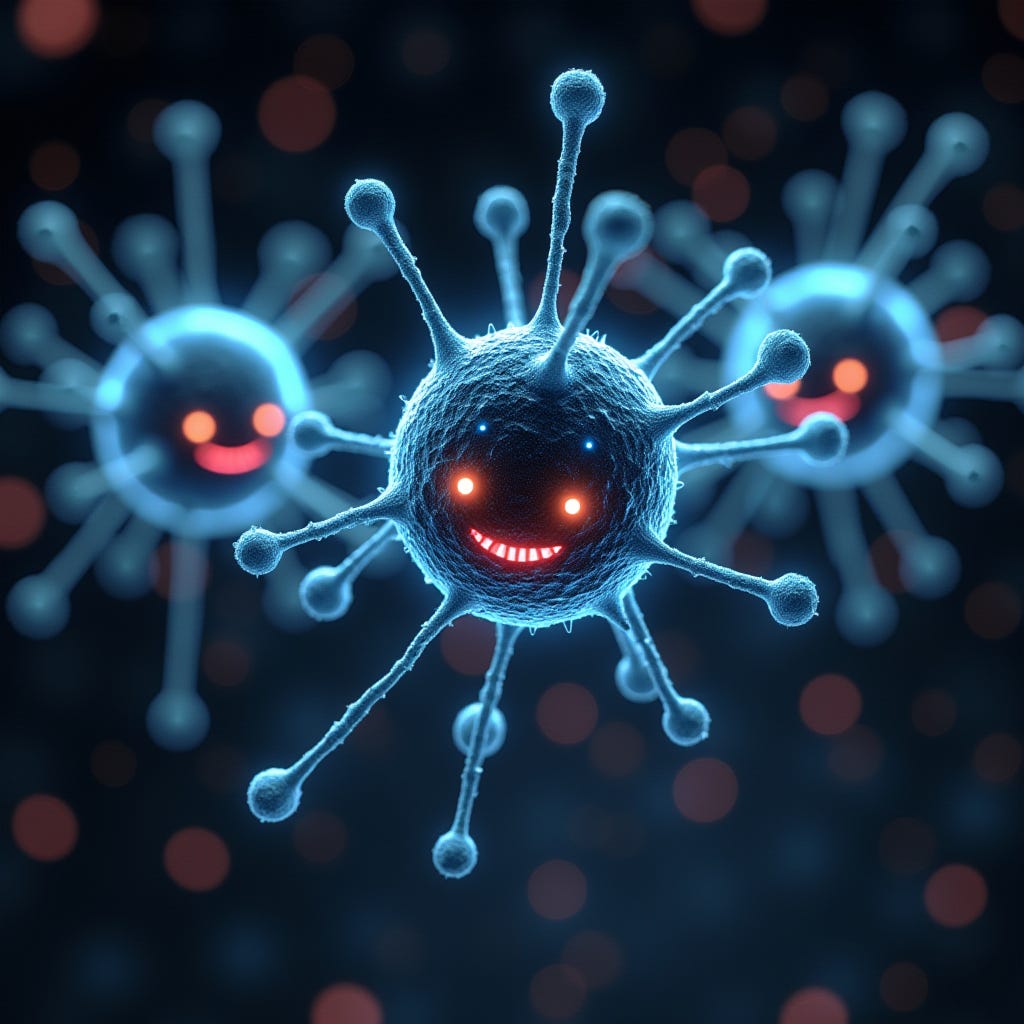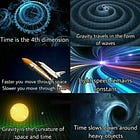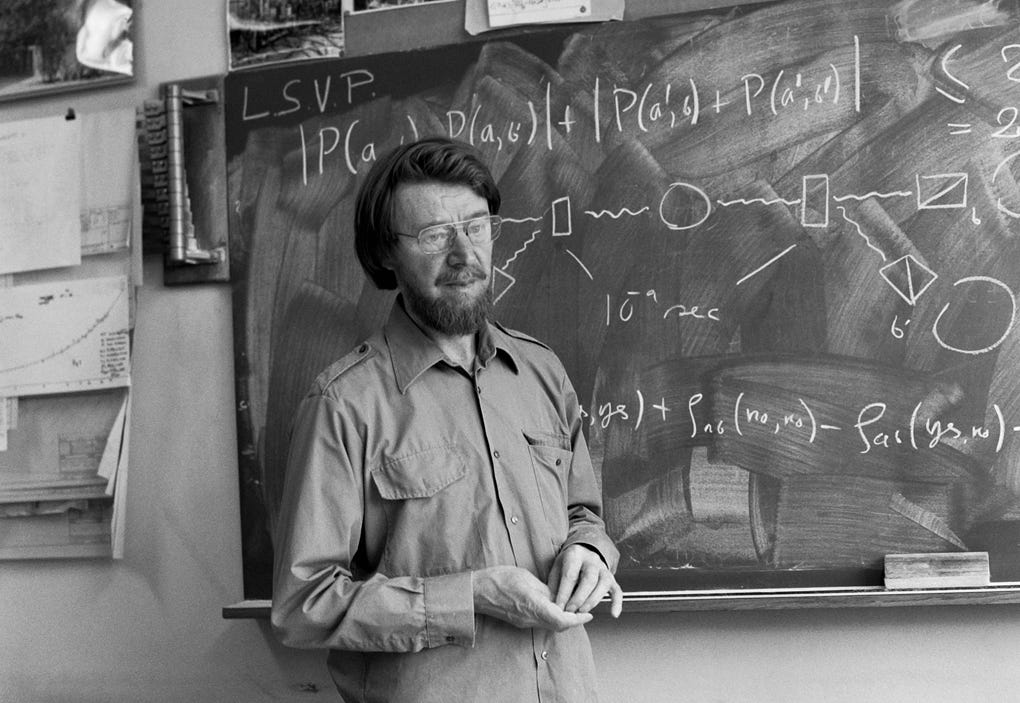Bell's Theorem which disproves Relativity and causes issues for Quantum Mechanics.
Electron and particle communication at a distance cannot be explained by Relativity. Relativity is a local-only phenomenon. It does not allow actions at a distance.

“…a fast-moving point mass passing a spherically-symmetric body causes the latter to rotate; a mass moving with rapidly-decreasing velocity exerts both an attractive and a repulsive force on neighboring bodies; a fast-moving mass passing a stationary mass exerts an explosion-like force on the latter; a rotating mass that is suddenly stopped causes neighboring bodies to rotate; the period of revolution of a planet or satellite is affected by the rotation of the central body.”
(Oleg D. Jefimenko, Gravitation and Cogravitation, 2006, p. vi)
As the above quote states, electrons and smaller particles are not ‘bullets’ shooting around, hitting each other and richocheting everywhere. Electrons, photons, positrons and nano-particles possess mass (denied by Relativity), oscillate, move and rotate both clockwise and counter-clockwise. They attract and repel. They need a medium or aether of ‘space’ to exist.
These micro-particle facts, nullify much of the ‘standard model’ and Relativity. This ‘micro-universe’ was ‘discovered’ by quantum physicists in the 1920s, and most ‘scientists’ paying attention, knew it spelled the end of Einstein’s philosophy (see the 1927 Solvay Conference post).

Photons and twins
Einstein received a Nobel prize in 1921, for his earlier work on photons and ‘Brownian motion’. He should probably have surmised that it was unlikely that space is ‘empty’ and equally unlikely that particles are not connected, even over a great distance. His own gravitational theorem, which is wrong, posits that gravity is a wave, generated by unknown forces (mass gravitational attraction), through the non-existent 4th dimension of space and time.
GTR by default must support some ‘gravitational spooky action at a distance’.
A Nobel winner for a discovery related to photons and light should have known about the many experiments in the 19th and early 20th centuries which demonstrated a spatial connection between particles.
One would expect that a Nobel winner in the area of photonic energy would have been cognisant of such physical experimental evidence and keen to reproduce such mechanical proofs or at least work with others to try to explain them.
However, as usual, there is no evidence that Einstotle or the cult of Relativity ever interacted with 20th century scientists and engineers who were engaged with electron and photon experimentation. Relativity is always a maths game.
Photons and slits
Particle attraction experimentation dates back to the early 1800s when Thomas Young demonstrated that light passing through two adjacent slits produces interference patterns.1 In 1909 Goeffrey Taylor discovered that photons from sources as weak as candles, produce interference lines. Something was going on and interfering with these particles - but what exactly?2 In the 1920s Paul Dirac (who disproved Relativity), offered the rather novel if inaccurate idea that: “…each photon then interferes only with itself.”3
In 1923, 2 years after the Einstotle was handed his Nobel prize for his work in defending Copernicanism through Relativity (with his photon electric theory as a fig leaf cover), Clinton Davisson and Charles Kunsman reported a similar phenomenon to the Young and Taylor observations, witnessing photons of light and electron diffraction. In 1927 Davisson repeated the electron diffraction experiment with Lester Germer. They shot electrons through a piece of nickel crystal. Thinking that the electrons were like little bullets, the two expected to see the electrons react accordingly and bounce around. Instead, the electrons produced an interference pattern and reacted as if they were in wave motion, not particle or ballistic motion.4
During this period Louis de Broglie (who also disproved Relativity), found that all objects have properties of waves.5 The lighter the object, the more pronounced the wave effect. de Broglie’s conclusion was that an object as small as an electron would act within a wave. Davisson and de Broglie’s work led to the famous double-slit experiments, which attempted to find out if these nano-particles were waves or particles or both.6
Over a period of 50 or so years, these experiments were able to prove that shooting just one electron, about every 10 seconds, toward 2 slits, would still produce an interference pattern against the receiving photographic plates. This seems fundamentally weird and wrong. Something was interfering with the electron. The same was true if hundreds of electrons were shot at the slits.7
The Bohr War
During the 1920s and 1930s a very open war developed between the cults (sorry followers) of Neil Bohr (1885-1962) and Saint Einstein. Einstein’s supporters included believers Boris Podolsky and Nathan Rosen. Together they issued a canonical encyclical in 1935 entitled, “Can Quantum-Mechanical Description of Physical Reality be Considered Complete?”
Einstein never accepted Quantum Mechanics. He was right that QM has its issues. But he knew that it would make Relativity irrelevant. This encyclical, ghost-written for the Einstotle, was directed at the Copenhagen group of QM headed by Bohr, Erwin Schrödinger, Max Born, Werner Heisenberg, et al. Einstein and his discipleship had to disprove QM and needed to address the particle-communication conundrum.
In essence, Einstein’s papal letter claimed that electrons were merely following already-programmed instructions built into them (termed; ‘hidden variables’). Einstein could not explain why, who, how, or where, these parameters were coded into the electron. Bohr, Heisenberg and QM maintained that the electrons randomly chose where they would hit, but there was also some mysterious communication between them so that each electron knew what the other was doing and would act accordingly. The mysterious communication was indeed mysterious.
In 1932, John von Neumann had produced a mathematical proof that the two theories of Relativity and QM could not be reconciled at the particle level. But in 1952, David Bohm suggested that they could be reconciled, at least theoretically. In the double-slit experiment Bohm held that a quantum wave was guiding each particle as it went through the slit.
As the particle passes through the slit, so does its wave, and it is the wave that is causing the interference line on the screen. When both slits are open, a particle will pass through one slit or the other, but its wave travels through both slits, again causing the interference lines on the screen. Seems sensible. Bohm’s theory was, however, surpassed by John Bell’s theorem.
Hell’s Bells
In 1964 John Bell’s experiments showed that electrons have various spin orientations (e.g., clockwise or counter-clockwise)8. Bell showed that if two electrons were placed back-to-back and sent to their respective detectors an equal distance away, the electrons will always produce opposite spins. He proved that it doesn’t matter how far away the detectors are placed from each other, the results are always the same. This seems to indicate that one electron somehow knows what the other one is doing even when separated by a substantial distance. Weird alright.
Bell had handed the Relativity religion an insoluble issue and seemed to confirm aspects of QM theory. The only way Relativists could explain the spin phenomenon of electrons would be to invoke a long-range physical force that connected the electrons. Long distance particle communication, outside of Relativity’s fictitious gravitational theory, is anathema to Einsteinianism.
Bell’s Theory of spinning electrons therefore nullifies Relativity. Why?
Relativity at the particle level employs only local or short-range solutions. It does not allow action at a distance across ‘inertial frames’. There are no absolutes in Relativity. There are absolutes in QM.
This means an unbridgeable gulf exists between QM and Einstotle’s philosophy. This is called ‘Bell’s Inequality’ or ‘Bell’s Theorem’. Following Bell’s work, a large host of physicists performed a series of experiments that confirmed Bell’s deconstruction of Einstein.9
Relativity cannot explain particle or electron activity in reality.
….Tolling for both
Bell’s Theorem disproved Relativity but it also gave QM some issues. Some strange but standardized phenomenon was occurring at the electron, or sub-electron level, that neither Einstein nor Quantum Mechanics had the ability to answer. Einstein was constrained by his removal of the aether medium in space, and Quantum Mechanics was limited by the Heisenberg Uncertainty Principle or HUP. Saint Stephen of the Hawking explains the HUP:
“[T]he uncertainty principle means that even “empty” space is filled with pairs of virtual particles and antiparticles…(unlike real particles, they cannot be observed directly with a particle detector)….If it weren’t – if “empty” space were really completely empty – that would mean that all the fields, such as the gravitational and electromagnetic fields, would have to be exactly zero. ..Thus there must be a certain minimum amount of uncertainty, or quantum fluctuations, in the value of the field (Hawking, A Briefer History of Time, 2006, pp. 122-123)
Saint Stephen is stating that space is not a vacuum and that ‘fields’ of energy, light, magnetism, gravity etc are suffused by particles and interactions. He knew that neither Relativity nor QM could, or can explain the origin of the wave that is attached to particles. Neither group could rationalise either Bell’s Theorem or the double-slit experiments.
Settled ‘science’ is decidedly unsettled. When in doubt ‘The Science’ goes back to the kitchen and concocts the word salads and borscht. Metaphysical explanations to explain what Relativity and QM cannot explicate have included:
…electrons have a mind of their own and are purposely trying to deceive us; everything in the subatomic world is a product of chance; an object only exists when someone looks at it, or that the observer has some telepathic power to make the electron perform on cue.10
Sure guys, if you say so. Like the fake-flying-virus, the particles are sentient, tricky, deceitful, too smart, too fast, or connected to telepathy and mind manipulation. Too much science!

Bottom Line
Based on this post there appears to be a whole world of forms and forces to investigate that is far deeper than the threshold available in Quantum Mechanics and the singularities of General Relativity. Bell’s theory is proven and reproducible. It vitiates the underlying tenets of ‘uniformity’ and ‘laws’ which Relativity assumes must exist in nature.
We are now at the point where ‘The Science’ must declare that particles have minds of their own. This confusion stems from Einstein’s fraudulent and rather inane misinterpretation of the light experiments by Airy, Michelson and others. He then tortures Maxwell’s equations and cuts out Maxwell’s aether. After ignoring physical evidence and real data, the Relativists have been pushed by default into stating that reality does not exist and we live in a dream world where electrons are sentient and can forward plan.
Further, this substack has also discussed the incredible density of plancktons which overturns both QM and Relativity. Current instruments simply cannot probe into this mysterious and infinitesimally small universe, which is the reason the theorists and metaphysicians are forced into hypotheses such as the Heisenberg Uncertainty Principle. In reality, ‘The Science’ cannot explain that much. As heretic Van Flandern notes:
“Of course, nothing about nature requires that the individual agents conveying an action be observably large or otherwise suitable for detection by any human-built apparatus. At one time, single air molecules were unknown to science…. Likewise, the photon…was once unknown, although humankind was able to perceive bulk light long before forming cogent ideas about its true nature.”11
As Van Flanderen implies the universe is far more complicated than we can ever imagine. ‘The Science’ has achieved some understanding of the macro and micro-worlds, but it is obviously a very limited comprehension of what is going on. Neither QM nor Relativity is an infallible Church, nor are the gospels and encyclicals of Einstein or ‘The Science’, remotely related to ‘consensus’ or immutable fact. In essence ‘The Science’ is always trying to catchup and explain reality by contorting its own canonical text. This is not how real science is conducted.
All hail.
==
1 Thomas Young, “Experiments and Calculations Relative to Physical Optics,” Bakerian Lecture, 1803, Philosophical Transactions of the Royal Society of London 94, 1-16.
2 Geoffrey I. Taylor, “Interference with Feeble Light,” (Proceedings of the Cambridge Philosophical Society, 15, 114-115, 1909.
3 Paul Dirac, The Principles of Quantum Mechanics, 4th ed., p. 9.
4 Nickel has an atomic plane spacing of 0.0909 nanometers. If a beam of wavelength 1.17 nanometers is shot at it, the reflection will be at 40 degrees. This depends on the formula nλ = 2d sin (θ/2) where θ is the angle between the atomic planes; d is the incident beam; and n is a positive integer. George Thompson found the same results, sharing the Nobel Prize with Davisson in 1937.
5 In 1923, A. H. Compton performed an experiment shooting high frequency X-rays at various materials. He found that, after the X-ray bounced off the object, it had a slightly longer wavelength than the incident X-ray, which means it had lower energy. It also meant that the energy of the X-ray was partially being transferred to the material it hit (usually graphite). This exchange between the X-ray and the graphite followed the known laws of conservation of momentum and energy. The whole process is known as the Compton Effect, and it supported the idea that energy traveled in very tiny but independent packets.
6 In 1956 G. Möllenstedt and H. Düker split an electron beam and obtained an interference pattern (Zeitschrift für Physik 145, 377-397); in 1961 Claus Jönsson performed the first “double-slit” experiment with electrons, demonstrating interference patterns with up to five slits.
7Theoretically, this phenomenon was known to exist by the results of Davisson’s experiments, but the theory could not be tested, at least completely, until the 1960s, and then not conclusively until the 1970s and 1980s. Experimental evidence was produced by P. G. Merli et al., “On the Statistical Aspect of Electron Interference Phenomena,” American Journal of Physics 44, 306-307 (1976); Akira Tonomura et al, “Demonstration of Single-Electron Build-up of an Interference Pattern,” American Journal of Physics 57, 117- 120, (1989).
8 The fact that electrons spin and have a magnetic field was discovered in 1925 by S. Goudsmit and G. E. Uhlenbeck. Later it was also discovered that each atomic particle (proton, neutron, etc.) spins and possesses a magnetic field, but since neutrons have no electrical charge, the magnetic field cannot be due to the spin of the particle.
9 Beginning in 1968, several physicists confirmed “Bell’s Inequality” using photons and protons (1968: Abner Shimony; 1972: Stuart Freedman and John Clauser; 1976: Edward Fry and Randall Thompson; 1982: Alain Aspect; 1986: Michael Horne; 1997: Nicolas Gisin; others include Anton Zeilinger, Richard Holt, M. Lamehi-Rachti, W. Mittig). In every case (except one which was later found to have experimental errors) quantum mechanics provided the correct answers and maintained its superiority over Einstein’s “hidden variables” theory.
10 John Gribbin, In Search of Schrödinger’s Cat, 1984, p. 171
11 “Gravity,” in Pushing Gravity, p. 93.







Dr Jerry Tennant wrote a book called Healing is Voltage, Scalar Energy which he proposes to solve the riddle of whether electrons are particles or waves. It seems science will use either when it is convenient. Dr Tennant theory is that the nucleus is not a proton but a black hole and each electron is a vortex of energy either radiating away from or toward the black hole. He also proposes the transmutation of elements.